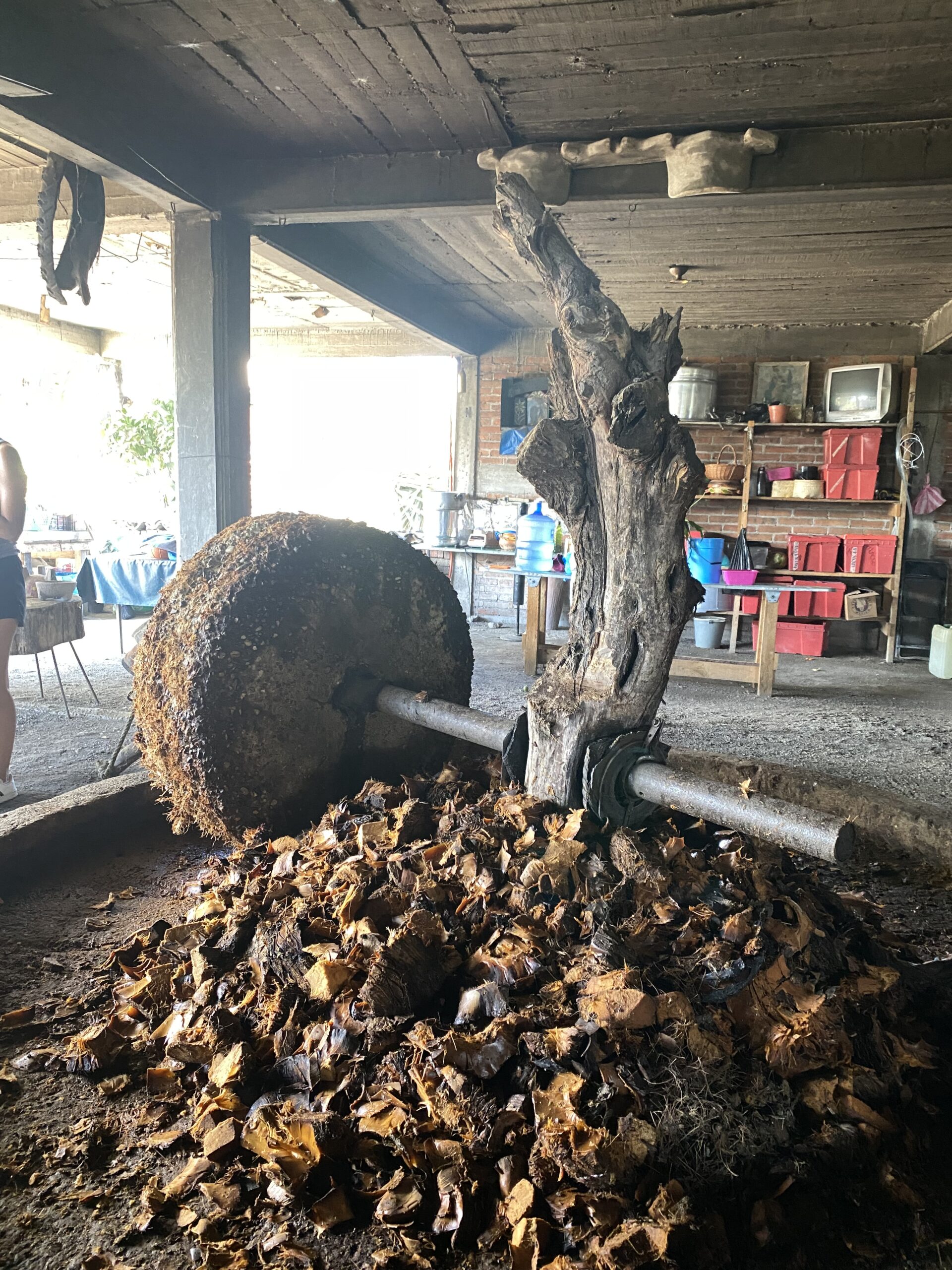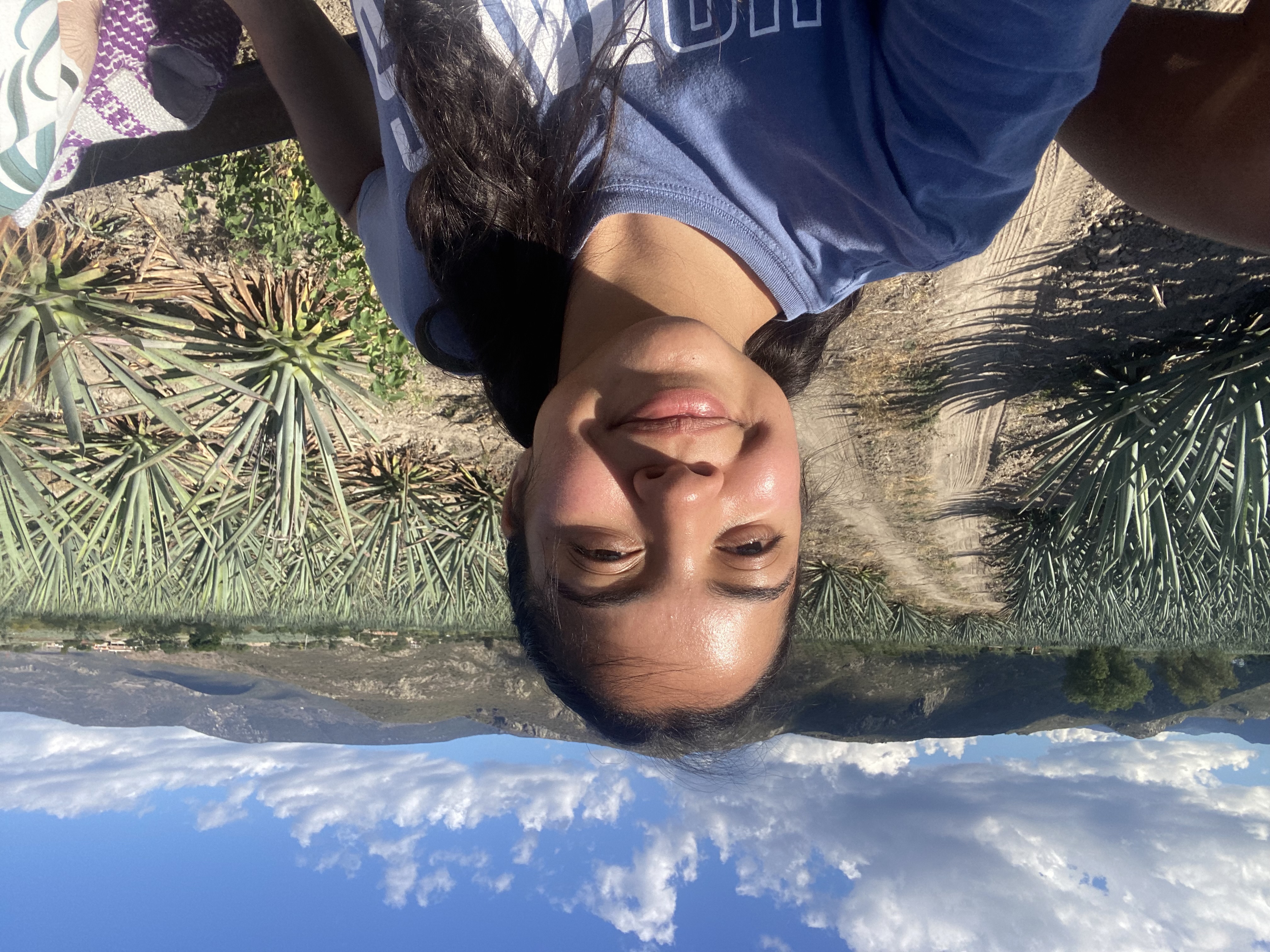
Para Todo Mal, Mezcal y Para Todo Bien Tambien
Sept. 29, 2023
This is the quote I commonly see painted on building murals, carved into souvenirs, and repeated by mezcal-enthusiasts, here in Oaxaca. After a trip to the natural mineral springs in Hierve el Agua, our cohort had the opportunity to visit a mezcaleria to learn about mezcal production and the drink’s significance in Oaxacan culture.
Mezcal is an alcoholic drink that can be made from any type of roasted agave plant giving the drink a strong, smoky taste. Before the tour of the mezcaleria, Rancho Vale Madre, I had already seen how mezcal was used as a celebratory drink during the frequent calendas. Calendas are parades that take place on wedding days, baptisms, holidays, graduations, and other celebrations. I have sometimes been walking home from class and run into a crowd of people, singing, dancing, throwing candy, and handing out beers and mezcal. Every calenda I have seen has a giant paper balloon announcing the cause for celebration and giant puppets to accompany the crowd.
At the mezcaleria, we learned that aside from being a celebratory drink, mezcal is also used for healing when someone is sick or during cleansing rituals called “limpias” to rid the body of negative energy. It was interesting to learn about mezcal’s properties and uses and compare it to tequila since that was the drink my family used for celebratory and healing purposes. Similarly to how a shot of tequila is said to cure a sore throat, rubbing mezcal on the throat is said to have the same effect. Other students in my cohort with roots in Oaxaca shared that when they were kids, they remember being bathed in mezcal when they were ill. One thing that was emphasized was the need to respect mezcal. We were told that mezcal is not like tequila, which is typically taken as a shot, but is instead sipped, smelled, and tasted to enjoy all aspects of the drink. I also learned the word “Dixeebe” in Zapoteco which is used as “cheers” but also to give a profound thank you to the ancestors that gifted us mezcal.
Later on in the tour, we were taken out into the fields to see the various agave plants growing on the ranch. At one point, under a beautiful pirul tree, the Maestro Mezcalero, Don Geronimo, shared that in his culture and community, aside from making mezcal, he was also a “curandero,” a healer. He offered to provide spiritual cleansings to those in the group he felt might benefit the most from it, someone who carried a lot of negative energy and needed to be cleansed. Many students in the group were eager to get a “limpia” and were hoping to be chosen for the experience. Standing there looking out into the fields of agave, I would have never expected that one of the students chosen would be me.
Before beginning the cleanse, Don Geronimo gave me instructions on how to stand, to breathe deeply when I felt mezcal touch my skin, and breath out away from the other students so that they wouldn’t be affected by the bad air my body was releasing. I had never participated in a limpia like this before, but I closed my eyes and embraced the experience with the intention of letting go of any negative energy and welcoming in positivity. Don Geronimo swished mezcal in his mouth and sprayed it on me several times, and each time I took a deep breath. He then rubbed a bundle of different plants and herbs on my arms, legs, and head, and asked me to rub them on my stomach and back as well. At the end of the limpia, he explained that I had been chosen because my energy or vibration was very cold. He interpreted this as meaning that I had seen a lot of death and blood in my lifetime and it was important that I talk about it because keeping things bottled up could lead to feelings of “soledad,” or loneliness. He then asked everyone to give me a group hug and reminded me that I was never alone and always had friends and family to lean on. I thanked him for the experience and reflected on what he had said.
Later that night, I was telling my mom about the experience over the phone and wondering what death and blood he could have been referring to, when my mom said, “Maybe he was referring to my experiences during the war? Maybe I passed it down to you?” My mom had seen a lot of death and blood during the Salvadoran Civil War and though I haven’t studied epigenetics extensively, I thought it was very interesting to consider it possibility and wondered how he might have perceived this. At the very least, I’m glad I opened my heart and mind to the spiritual cleaning and that it gave my mom and I the opportunity to share a vulnerable moment and talk about her experiences. I’m excited to see what other ways I’ll immerse myself in cultural rituals and traditional healing practices while I’m here.

